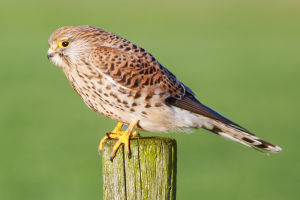A dragonfly is an insect belonging to the order Odonata. They typically have long, slender bodies and transparent wings, often adorned with vibrant spots.
Dragonflies possess two pairs of wings that can vibrate and move independently, allowing them to maneuver with agility in various directions including hovering, forward and backward flight, as well as ascending and descending, all at remarkable speeds.
Dragonflies are incredibly proficient flyers, demonstrating complex aerial maneuvers and boasting a highly developed visual system.
With their large compound eyes, they have a panoramic view, capable of observing their surroundings without any blind spots.
This exceptional visual acuity enables dragonflies to capture flying insects and other small prey in mid-air.
The life cycle of a dragonfly encompasses four stages: egg, larva, pupa, and adult.
Reproduction takes place through mating and egg-laying.
Dragonfly larvae are aquatic and carnivorous, feeding on small insects and other water-dwelling organisms.
The larval stage involves several molts until it transforms into a pupa.
During the pupal stage, dragonflies undergo pupation and ultimately emerge as adults from their pupal casings.
Dragonflies hold significant ecological importance as they contribute to natural pest control.
Their diet primarily consists of insects, targeting various small flying creatures such as mosquitoes, flies, and other fellow dragonflies.
With their swift and precise flight abilities, dragonflies exhibit efficient predatory behavior, thus assisting in maintaining the balance of insect populations.
Additionally, dragonflies serve as a vital food source for several animals, including birds, spiders, and other predatory insects.
Dragonflies encompass a diverse range of species, with over 6,000 known and described worldwide.
They inhabit various environments, including lakes, rivers, swamps, forests, and grasslands.
The lifespan of dragonflies varies among species, but typically adult dragonflies have a relatively short lifespan, ranging from a few weeks to a few months.
This abbreviated lifespan can be attributed to the adult stage being primarily dedicated to reproduction and ensuring the continuation of their species.
Overall, dragonflies are captivating and remarkable insects.
Their unique anatomical features and exceptional flight capabilities make them stand out in the natural world.
Some notable dragonfly species include:
1. Golden Dragonfly (Libellula spp.): These large dragonflies exhibit bright gold or yellow bodies with expansive wings.
Common species include the four-spotted golden dragonfly (Libellula quadrimaculata) and the eagle dragonfly (Libellula fulva).
2. Aeshnidae: This family comprises several large dragonfly species characterized by long, slender bodies and robust flight abilities.
Notable species include dragonflies from the Aeshna genus, such as the common dragonfly (Aeshna cyanea) and the large dragonfly (Aeshna grandis).
3. Gomphidae: Dragonfly species within the Gomphidae family typically possess stout bodies and prominent jaws.
Prominent examples include the purple dragonfly (Gomphus vulgatissimus) and the yellow dragonfly (Gomphus flavipes).
4. Corduliidae: The Corduliidae family encompasses various medium to large-sized dragonflies predominantly found in North America.
Species of interest include the green dragonfly (Epitheca princeps) and the swallowtail dragonfly (Somatochlora spp.).
The examples provided above represent only a fraction of the vast array of dragonfly species and families.
Each species possesses distinctive traits and occupies specific distribution ranges.


